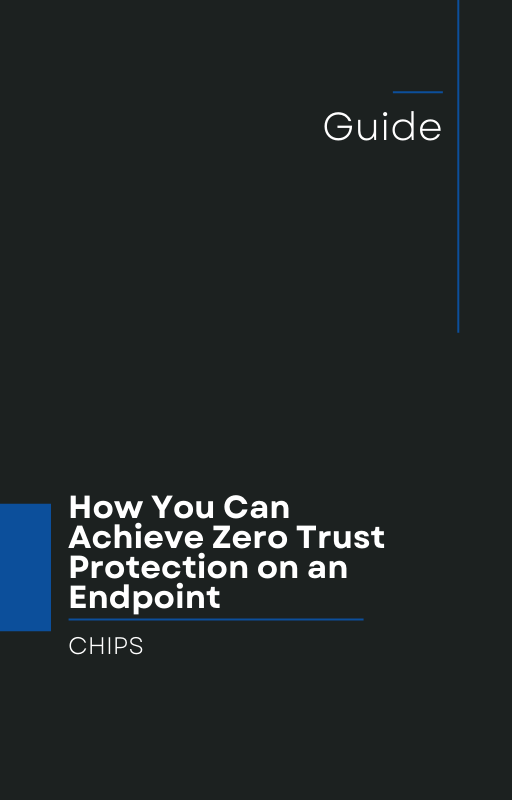A recent Microsoft investigation revealed a worrisome new tactic from a ransomware gang called Storm-2460: they are using a backdoor named PipeMagic, disguised as a fake ChatGPT desktop application, to gain access to systems — then after privilege escalation through a zero-day in Windows (CVE-2025-29824), deploying ransomware. The Record from Recorded Future
For business owners, security teams, and IT decision-makers, this incident carries a blunt message: reliance on traditional Detect & Respond (i.e. scanning, logging, alerting, remediation after the fact) is increasingly insufficient. What we need in the modern threat environment is strong Isolation & Containment to stop threats like PipeMagic before they can do damage.
What happened: how PipeMagic works
Here are the key details of the PipeMagic backdoor incident:
-
Storm-2460 created a malicious payload masquerading as the ChatGPT desktop app. When opened, it shows a blank interface while performing malicious work in the background.
-
The malware uses a zero-day vulnerability in the Windows Common Log File System Driver to escalate privileges. Once that is done, ransomware follows.
-
The attack is modular and flexible, targeting multiple sectors (IT, finance, real estate) and geographies globally (US, Europe, South America, Middle East).
-
The stealth design makes detection very hard; many defensive tools only notice after damage or when unusual behavior occurs.
This sort of threat demonstrates how attackers are growing more sophisticated: they exploit zero-days, hide in plain sight, and strike before detection tools can do much.
Why “Detect & Respond” isn’t enough
Traditional endpoint security models are based largely on detecting known threats (malware signatures, heuristics, behaviour anomalies) and then responding — cleaning, isolating, patching, etc. But in cases of zero-day exploits or clever backdoors, detection can be too late: the damage is already underway. Some challenges:
-
Attackers often move faster than detection tools can adapt. Zero-day vulnerabilities are, by definition, unknown until exploited.
-
Even after detection, containment is difficult if malware has already spread privileges, exfiltrated data, or laid ground for ransomware.
-
For businesses in regulated sectors or with high-sensitivity data, the cost of breach (financial, reputation, compliance) can far exceed the cost of more robust prevention.
This incident with PipeMagic is a textbook example. The malware bypasses user suspicion by masquerading as a benign application. It uses unknown vulnerabilities. By the time detection tools flag anomalies, the attacker can already have deep access.
Isolation & Containment: A better strategy
So what should businesses do instead? The move must be toward Isolation & Containment:
-
Isolation: Prevent suspicious or untrusted code from executing in ways that affect critical systems. Enforce rules that limit what apps, users, or processes can do, especially with system-level privileges.
-
Containment: If something malicious does get in, ensure it cannot spread, escalate, or cause wide damage. This includes techniques like process isolation, micro-segmentation, privilege separation, and preventing lateral movement.
A solution that embodies this approach doesn’t wait for alerts or red flags: it prevents malicious behavior from executing in the first place, or contains it so that the business can keep operating without catastrophic compromise.
Why AppGuard works
Enter AppGuard: a proven endpoint protection solution now available for commercial use, with a strong track record over the past 10 years. AppGuard was built around the philosophy of isolation and containment, and here’s why that matters:
-
AppGuard enforces least privilege rigorously: only trusted, signed, or authorized code gets to do sensitive operations. Malicious payloads (like PipeMagic) cannot escalate privilege or run system-level exploits unless explicitly allowed.
-
It uses application isolation: untrusted code is confined in ways that prevent it from accessing or compromising protected assets.
-
Because it doesn’t rely solely on signature databases or behavior-based detection, it can block previously unknown threats — zero-days, backdoors, disguised malware — before they cause harm.
-
There is a proven 10-year history of using AppGuard in high-security environments with good results. This gives businesses confidence that it’s not just theory — it works in practice.
When facing attacks that rely on disguise, stealth, and zero-days (as with Storm-2460 / PipeMagic), AppGuard shifts the defense paradigm: from asking Did we detect the breach? to Did we prevent the breach from doing damage?
What business leaders need to do now
To protect your organization against PipeMagic-style attacks (and increasingly common variations), here’s a roadmap:
-
Review your endpoint protection strategy. Are you mostly relying on detect/respond tools (antivirus, EDR, signatures)? If so, identify gaps in containment.
-
Implement strict least-privilege policies. Prevent applications/users from running with more permissions than needed.
-
Adopt application isolation tools. Enforce that untrusted or unknown executables cannot break containment rules.
-
Test security plans with realistic attack simulations. Include zero-day and disguise/malware vectors to see if your current defenses hold up.
-
Consider AppGuard. For business environments especially with sensitive data or regulatory exposure, AppGuard offers a proven track record and architecture built around isolation and containment.
The cost of inaction
Not upgrading your protection strategy has real costs:
-
Data breaches, including theft of intellectual property or customer information.
-
Ransomware damage — both ransom payments and the cost of downtime, restoration, legal exposure.
-
Regulatory fines, loss of trust, brand damage. In many industries, breach notification laws and liability are serious.
-
Recovery costs (forensics, remediation) often far exceed the investment in prevention.
Conclusion
The PipeMagic / Storm-2460 case is a wake-up call. Disguised malware, privilege escalation through zero-days, ransomware — all are in the attacker’s toolkit. Detect & Respond is no longer sufficient by itself. Businesses must move to Isolation & Containment as a central part of their defense strategy.
Want to Prevent This Kind of Incident?
If you’re a business owner, security leader, or IT manager, talk with us at CHIPS. We can show you how AppGuard integration can prevent threats like PipeMagic before they escalate. Let’s move beyond detecting breaches — let’s prevent them altogether. Contact CHIPS today and make Isolation & Containment your security standard.
Like this article? Please share it with others!

September 19, 2025

Comments